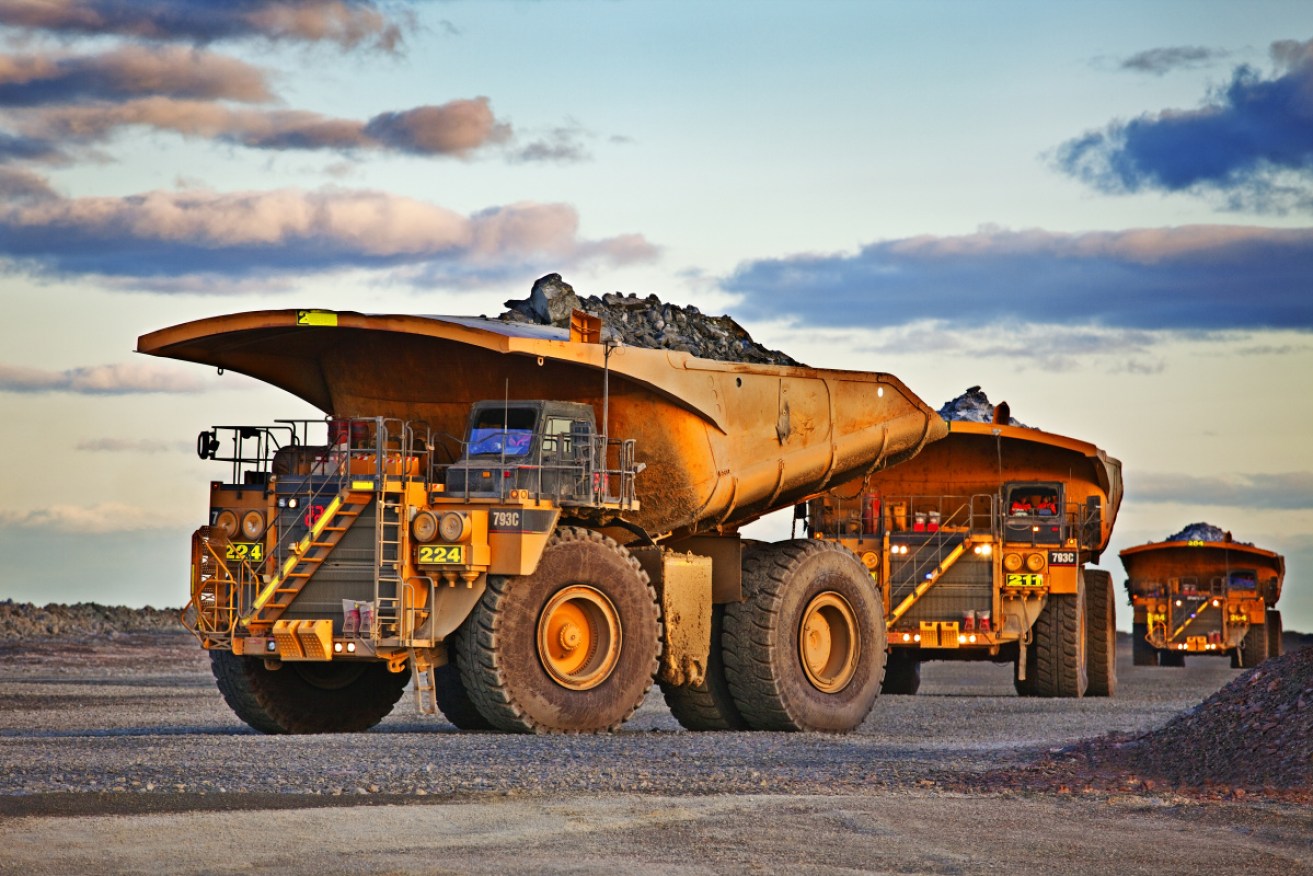Trade figures underscore economy’s reliance on mining and China


Australia's economy is vulnerable to falling commodity prices. Photo: Getty
January’s devastating bushfires caused less financial harm to tourism operators than anticipated.
But fresh data has underscored the economy’s vulnerability to shifting Chinese demand and falling commodity prices – pointing to challenging times ahead.
Australian Bureau of Statistics figures show China accounted for 38 per cent of Australia’s total goods exports in January.
Yet the value of Australian exports to the Middle Kingdom fell 12 per cent below its recent peak in June.
Indeed APAC economist Callam Pickering said this showed exports to China were already slowing before the coronavirus outbreak – spelling bad news for jobs and growth.
Mr Pickering told The New Daily the decline was driven largely by falling commodity prices, as export volumes had held firm.
Together with the national accounts, the trade figures painted a worrisome picture of a struggling economy that is overly reliant on mining and vulnerable to fluctuations in commodity prices, he said.
Tweet from @CallamPickering
“One of the industries that was really holding up the economy over the past 12 to 18 months has been the mining sector,” Mr Pickering said.
“But over the past three to six months, the sector has started to struggle a little bit more, due to declines in commodity prices
“And so that’s just become another area of vulnerability for the Australian economy as we enter this difficult period.”
Although the ABS figures show the bushfires had less of a financial impact on tourism than feared, with the value of travel services unchanged in January, metal ore and mineral exports fell $792 million over the month (-7 per cent), and coal exports fell $161 million (-4 per cent).
The heavy falls in mining exports contributed to a 3 per cent drop in Australia’s trade surplus, which fell $166 million to $5.2 billion.
Markets had expected January’s trade surplus to come in at $4.8 billion, prompting economists at ANZ to describe the better-than-expected results as “solid”.
But the headline figure masked some worrying trends.
The value of Australia’s iron ore exports in January were down 17.4 per cent from their peak in July, while the value of the nation’s coal exports were down 25 per cent from their peak in May.
Commonwealth Bank commodities analyst Vivek Dhar said Chinese import restrictions were the main reason the price of coal had fallen, while a ramp up in Brazilian production following a major dam collapse was the main driver of the falling iron ore price.
Although there were strong gains in cereal grains (+25 per cent), wool and sheepskin (+19 per cent), and meat exports (+7 per cent), exports across the board dropped $1 billion, or roughly 2.8 per cent.
That’s bad news for an economy that is heavily reliant on export revenue, with the national accounts on Wednesday showing that exports were responsible for half of Australia’s GDP growth in 2019.
Public spending provided the other half, with the domestic private sector contributing no growth whatsoever.
Mr Pickering said Thursday’s trade figures confirmed another worrying trend exposed by the national accounts – that of nominal deflation.
“What really jumped out at me was that there was a decline in both exports and imports in January, so both were down about 2.8 per cent, which does point to some weakness,” Mr Pickering said.
“Reduced exports are a sign of global weakness, and reduced imports are a sign of domestic weakness – both of which make sense in the current economic climate.”
Imports fell 2.8 per cent, or roughly $1 billion, to their lowest level in January since June 2019.
Tweet from @ShaneOliverAMP
Describing the results as a “mixed bag”, Westpac senior economist Andrew Hanlan said it was difficult to determine whether the Lunar New Year, which fell on January 25, had negatively affected January’s figures.
“No doubt, there are significant disruptions to trade in the final week of the month. Equally, there was likely a substantial bring forward of shipments during the three weeks prior to this,” he said.
What’s almost beyond doubt, though, is the fact the February and March figures will be much worse.
“Net exports will likely be a sizeable negative for growth in the March quarter,” Mr Hanlan said.
The trade figures come after PricewaterhouseCoopers said on Wednesday that the virus would cost the economy $34.2 billion in reduced activity – blowing a $26 billion hole in the federal budget and almost certainly eroding the Coalition’s much-vaunted budget surplus.
Treasury has said the virus will wipe at least half a percentage point from GDP in the March quarter – more than double the estimated impact of the bushfires.








